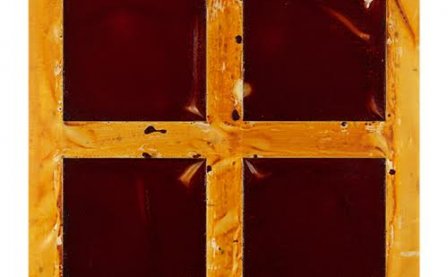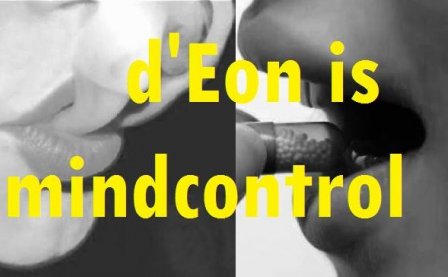“I enjoy working collaboratively because it changes all the parameters one gets used to so easily, because it still holds potential for subversion within institutionalized structures, and because it allows for a very intimate discussion within a closed circle, as opposed to the official text that so much art adheres to,” says Swiss artist Tobias Madison (who did the artwork forFoxconn / Trios) of his general feelings toward collaborative work. Indeed, one of the beauties of Knives comes from their impregnating marriage of music and visual art, engaging a collaboration that changes the criterion affecting its perception and evaluation. As a result, it feels insubstantial to write about a Knives release without taking into account the entire picture — a totality with the capacity to generate a language of extraordinary passages and transitions. In such a way, the artists’ voices become unchained; they twist and intertwine, unsettling and complicating one another.
Recorded during his time of involvement with Hippos in Tanks, d’Eon’s Foxconn / Trios puts together small arrangements and short loops that are coherent both forward and backward — “the MIDI information can be traversed in any arbitrary direction at any arbitrary intervals and still be harmonically and contrapuntally sound.” Schoenberg once noted that whether looking from above, from below, from the front, from behind, from the left, or from the right, a hat always remains a hat, even though it may look different from different viewpoints. For Schoenberg, musical inversion and retrograde, too, may look different in basic form but are essentially the same motif. In forming mental images, direction is only as consequential to the geometrics of their perception as it is to material objects. We can always recognize an object, no matter its physical place and are able to recreate it in the faculty of the mind in other conceivable ways. Similarly, at the core of d’Eon’s Foxconn / Trios is the presupposition that a sequence of musical events will remain known or independently determined no matter how their mutual relations are reflected.
While for Schoenberg, musical space lacked fixed points of orientation — he suggested that distinction between “upward” and “downward” movement is insubstantial — d’Eon utilizes the ingrained identities of certain sounds, superficial or not, to orient the space. For d’Eon, it is these identities that drives the continuity:
Ordinary rhythmic patterns are inherently legible regardless of the firing order of events because of a snare’s inherent role as the up beat and a kick’s as the down beat. If all notes in a phrase and all chords in a progression work equally well with their neighbours before them and their neighbour after, the direction of the clock is irrelevant. If those conditions are met, a 32-bar, two- three- or four-chord pattern with a single melody is easily made into a fully through-composed piece of music that could continue for hours without any pattern repetition at all.
Powered by the agency of MIDI, the result is a jittery affair reminiscent of ghetto house and its derivatives. Expected trajectories are distorted, and rhythms are interrupted by percussive spasms. Stuttering beats are countered by synthesized harmonies and melodic contours. While the pieces are engendered by the creative possibilities of MIDI technology, they are represented by a sonic face that is proportionately basic, using low sample-rate sound fonts. As a result, the tracks appear elemental and straightforward — almost cold — despite the complex nature of their patterns.
For Foxconn / Trios, artist Tobias Madison presents “a frame which has been scarred through the support of its contents — a disfigured organic form which feels graceless and violent.” Conceptually, it continues a trajectory based on self-sufficient content that is non-concurrent with rules governing its surroundings. In this case, the scarring of the frame conveys a disagreement between the inner and outer elements. An earlier work of Madison, commissioned for Frieze, used wall panels to create elevated platforms that functioned as a stage, inspired by the architectural organization of Tokyo’s Noh Theatre stages, which afford varying viewpoints and perspectives. For the stage device, Madison composed a “play” running in a continuous loop. Rather than actors, however, the play comprised steel tanks of varying levels, connected by pumps circulating liquid iodine. The circulation of the liquid equalized the content in relation to the level of the tank, creating a steady, ongoing action — in essence, a stage able to play itself. According to Madison, “the piece then has two different timelines: a circular loop in the stage area, and one that you walk along as a visitor.”
A similar work, entitled “Hydrate + Perform,” consists of acrylic tanks filled with flavored vitamin water. The blocks of color formed by the different flavors “create a counter rhythm to the columns that support the gallery.” These works by Madison are perhaps more analogous to d’Eon’s musical concept. In particular, the counter rhythms, differing perspectives, and variable timelines parallel the mechanisms of d’Eon’s music, which “freely and irregularly travel both forward and backward in MIDI-time.” On this occasion, however, the artists’ voices are more ajar — slightly open and unlatched with one another — albeit related. But this only pushes the spiralling nature of the whole, itself enabling a self-sufficient reading independent of the text. Like Madison’s frame, Foxconn / Trios becomes disfigured through the toil and exertion of its snarling content.
More about: d'Eon




